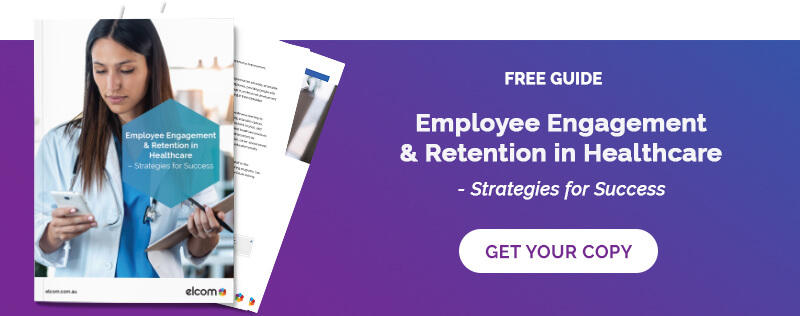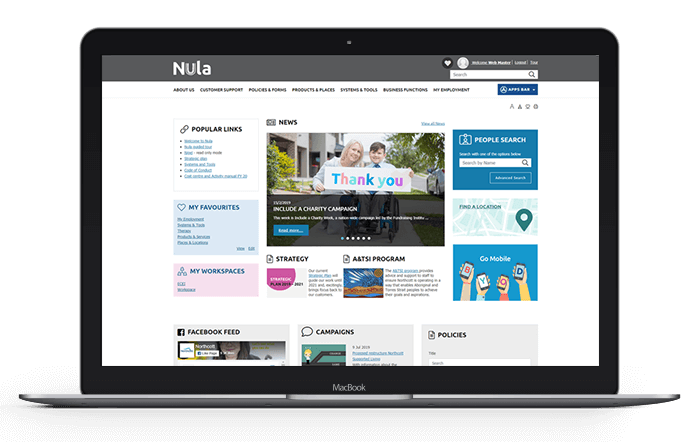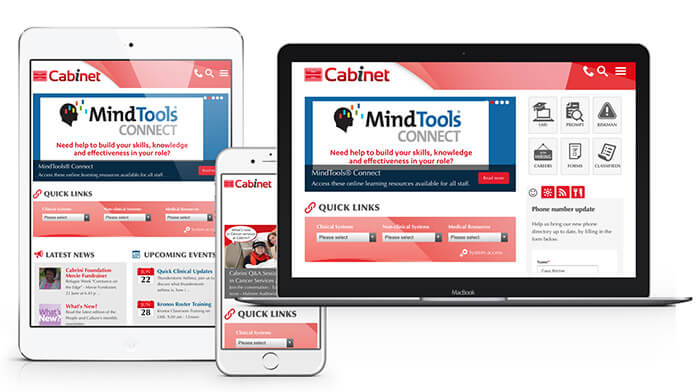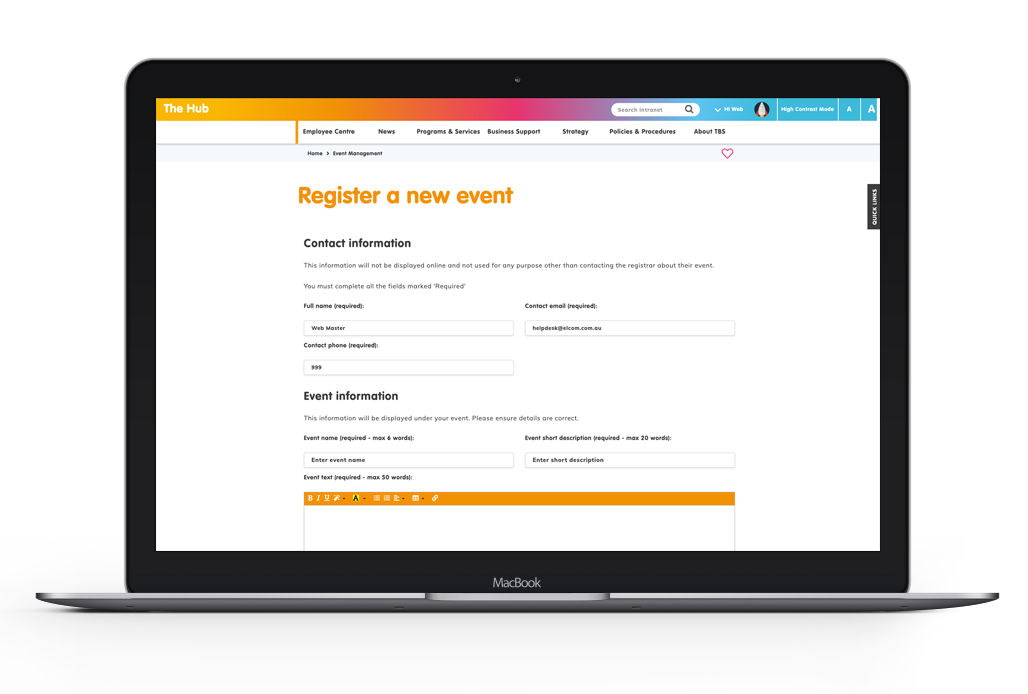Digital transformation is reshaping industries around the globe, and healthcare is no exception. From telemedicine to AI diagnostics, the impact of technology in healthcare is far reaching and revolutionising how care is delivered. Among these advancements, the intranet stands out as a key enabler of this transformation.
Let's delve into the digital transformation journey in healthcare, exploring the importance of intranet in healthcare, dissecting the ways that it can positively improve health and community services.
How Intranets Can Be Used in Healthcare
Intranets have evolved from being simple internal communication platforms to robust tools, delivering an array of functions from real-time communication to seamless access of vital information.
With the vastness of the healthcare landscape and the use of intranet in healthcare, we're seeing enhanced healthcare delivery, especially in geographically dispersed locations.
Gone are the days when patient records were stacks of paperwork. Modern intranets, ensuring compliance with regulations, enable swift access to digital patient records, making patient care timely and more informed.
Whether it's a critical patient update or inter-departmental memos, the use of intranet in health and community services bridges communication gaps, fostering a cohesive environment amongst professionals. They also assist with administrative tasks. From payroll to scheduling, intranets can handle various administrative tasks, freeing up time for medical staff to focus on what truly matters - patient care.
We'll touch on this in further details later on.
Benefits of Using Intranets in Healthcare
There are several benefits of using intranets in healthcare.
Improved Communication
With staff working across different shifts and locations, intranets break down communication silos, ensuring every message reaches its intended recipient.
One of the greatest strengths of an intranet lies in its ability to centralise and streamline communication. No more searching through overflowing email inboxes or scrambling for important documents. With an intranet, all critical updates, news, and resources can be accessed from a single platform. For example, if a new infection control policy is introduced, it can be shared organisation-wide via the intranet, ensuring everyone gets the message.
Enhanced Collaboration
Whether it’s sharing patient case studies or brainstorming on patient care strategies, intranets provide platforms for professionals to collaborate seamlessly.
An intranet isn't just a one-way communication tool. It's a platform that promotes interaction, engagement, and a sense of community. Staff can share successes, celebrate milestones, and recognise peers through the intranet's social features. This not only boosts morale but also promotes a positive organisational culture.
Increased Efficiency
Time saved in accessing patient data or administrative tasks directly translates to improved efficiency and more time dedicated to patients.
With a centralised system, there’s no more sifting through piles of paperwork or disparate systems. Intranets offer a unified platform, making data retrieval faster and less cumbersome.
Advanced intranets allow for automation of repetitive tasks. Whether it's filling in and processing forms or providing monthly updates for research reports, automated workflows mean tasks that once took hours can now be completed in mere minutes.
Also, the beauty of modern intranets lies in their integrative capabilities. Features like calendar integrations, task management tools, and document management integration ensure professionals can manage their daily activities seamlessly, further optimising efficiency.
Improved Patient Care
With swift access to information and improved communication, healthcare professionals can provide more precise and timely care.
In healthcare, your frontline employees need quick access to a myriad of resources - from patient records to treatment guidelines. The intranet can host all these resources in an easily searchable format. This empowers staff to deliver efficient and informed care, without having to waste valuable time searching for information.
Also, learning never stops in healthcare. An intranet can serve as your organisation's digital library, hosting a wealth of resources like research papers, training videos, and educational materials. This ensures continuous learning and helps your staff stay updated with the latest practices and innovations.
Reduced Costs
By digitalising various administrative processes and reducing redundancy, healthcare intranets benefits the bottom line by significantly cutting down on operational costs. This includes:
- Digitalised Processes: Gone are the days of endless paperwork. Digitalising administrative tasks reduces the costs associated with paper, printing, and storage.
- Reduced Training Costs: With e-learning modules and digital training materials, new staff can be onboarded and existing staff can be trained without the hefty costs associated with traditional training methods.
- Optimised Resource Allocation: With better data access and analytics capabilities, intranets help in understanding where resources are most needed, ensuring cost-effective allocation and reducing wastage.
Enhanced Security
Modern intranets come with robust security features, ensuring patient data and other sensitive information are shielded from breaches.
Some security features of intranets include:
- Encrypted Data: Modern intranets encrypt patient data both in transit and at rest, ensuring it's unreadable to any malicious actors.
- Multi-factor Authentication: This adds an additional layer of security, ensuring only authorised personnel can access the intranet and the data contained within.
- Regular Security Audits: Advanced intranets support regular security audits and penetration tests. This proactive approach ensures potential vulnerabilities are identified and rectified before they can be exploited.
- Data Backup and Recovery: Intranets can be set up to regularly back up data, ensuring that in the event of unforeseen circumstances like hardware failures or data corruption, recovery is swift and no critical information is lost.

Leveraging Intranets for Better Healthcare Delivery
The integration of intranets in the healthcare sector isn’t just about technological adoption; it's an evolution in how healthcare services are delivered.
The agility it brings to the table—whether through swift communication, seamless data access, or streamlined administrative functions—the use of intranet in healthcare is pivotal in the push towards a more efficient and patient-centric healthcare landscape.
We'll delve into the key intranet features and functionality that make a real difference for healthcare organisations.
Engage Patients and Families
Enhancing patient engagement is key to improved outcomes.
Healthcare intranet benefits:
- Patient Portals: Through intranet-integrated patient portals, patients and their families can view medical histories, book appointments, and access educational materials.
- Feedback and Surveys: An intranet can host surveys and feedback forms, allowing patients to share their experiences and provide valuable insights into areas of improvement.
- Interactive Content: Hosting interactive content like videos, infographics, and quizzes can educate and engage patients about their health conditions and treatments.
Promote a Culture of Safety
Safety in healthcare isn’t just about patient safety; it extends to the well-being of the staff too.
Healthcare intranet benefits:
- Safety Guidelines Repository: A dedicated space in the intranet can host safety protocols, guidelines, and checklists, ensuring that they are universally accessible to all staff.
- Incident Reporting: Intranets can offer modules for easy reporting of safety incidents, ensuring timely intervention and resolution.
- Safety Training Modules: Regularly updated safety training sessions can be hosted on the intranet, ensuring that staff is always aware of the best practices.
Support Research and Education
In a sector where staying current is critical, an intranet can be a powerful tool for ongoing professional development and training.
Healthcare intranet benefits:
- Research Library: It can also act as a repository for the latest research papers, case studies, and medical journals, ensuring that the healthcare staff remains at the forefront of medical advancements
- Learning Management Systems (LMS): An LMS can be integrated into the intranet, offering staff access to a range of online courses, webinars, and training materials. This not only allows for continuous professional development but also makes it easier to track and report on learning progress.
- Community Forums: These are ideal spaces for staff to share and discuss new research findings, innovative practices, or complex case studies. This facilitates peer-to-peer learning and keeps the conversation going around continuous improvement.
Facilitate Communication Between Healthcare Professionals
Communication forms the backbone of effective healthcare delivery, and an intranet can significantly enhance this. The platform's various features facilitate communication across departments, roles, and locations, ensuring that everyone stays informed.
Healthcare intranet benefits:
- News and Announcements: An intranet provides a dedicated space for sharing organisational updates, news, and announcements. Staff can log in to the intranet to get the latest information, ensuring they're always up to date. For instance, if there's a new development regarding a public health crisis, you can quickly disseminate this vital information organisation-wide via the intranet.
- Document Management: An intranet acts as a central repository for all important documents. This includes operational manuals, treatment guidelines, research findings, and more. It eliminates the need to sift through countless emails or files to find a specific document.
- Community Spaces: These features enable staff to have ongoing discussions on various topics. For instance, healthcare providers can discuss complex patient cases, brainstorm solutions, and share their expertise. It's not just a communication tool; it's a collaborative problem-solving space.
Boosting Engagement and Morale Between Staff
An intranet is more than just a professional tool—it's a platform that fosters a sense of community, boosting morale and engagement.
Healthcare intranet benefits:
- Recognition Boards: One of the features that stands out on an intranet is the recognition board. Here, employees can acknowledge the achievements and hard work of their peers.
- Social Feeds: Just like social media platforms, an intranet also offers social feeds where employees can share updates, pictures, or even fun moments from their day. This not only brings a sense of camaraderie but also helps staff get to know each other better, strengthening the organisation's culture.
- Employee Surveys: Intranets can host employee surveys to collect feedback on various topics, from new policies to workplace culture. This encourages employees to voice their opinions and contribute to the decision-making process, fostering a sense of ownership and engagement.
Connecting Frontline Employees to Resources
In the fast-paced environment of healthcare, frontline staff need quick and easy access to a wide range of resources. The intranet can be a key tool in delivering these resources effectively.
Healthcare intranet benefits:
- Resource Libraries: A well-organised, searchable library of resources is a crucial feature of an intranet. Here, frontline staff can access patient information, treatment guidelines, research updates, and more. For example, if a doctor needs to reference the latest guidelines on a particular treatment protocol, they can quickly search the intranet's resource library instead of wading through numerous external databases.
- Integrated Systems: An intranet can integrate with third-party systems, such as Electronic Medical Records (EMRs) or rostering applications. This means staff can access all necessary tools and information from a single platform, streamlining their workflow and increasing efficiency.
- Mobile Accessibility: Many intranets offer mobile accessibility, allowing staff to access necessary resources even when they're on the move or at a patient's bedside.
Streamline Administrative Processes
Adhering to rules and guidelines is essential in healthcare to ensure quality care and patient safety. An intranet can be a powerful tool for maintaining and communicating these standards.
Healthcare intranet benefits:
- Centralised Information: An intranet can host all policy documents, procedural guidelines, and compliance-related information in one location. Staff can access this information at any time, ensuring they have the most up-to-date guidance. For example, if there's a change in a medication administration policy, the updated version can be uploaded to the intranet and immediately be accessible to all relevant staff.
- Notification System: Intranet systems often include a notification feature. Whenever there are updates or new additions to policies or procedures, staff can be notified. This ensures they're always informed about the most recent updates.
- Quiz and Assessment Features: Some intranets have functionality that allows the creation of quizzes or assessments related to policy comprehension. This can help ensure that all staff understand and can correctly apply critical procedures or policies.
Accessibility Through Intranet Mobile App
In a field as dynamic as healthcare, having access to information on the go is incredibly valuable. There is a growing use of intranet in health and community services thanks to mobile apps that can provide this accessibility.
Healthcare intranet benefits:
- Mobile Access: With a mobile app, healthcare professionals can access the intranet at any time and from anywhere. Whether they're in transit, on a break, or at a patient's bedside, they can quickly pull up necessary information or tools.
- Push Notifications: Much like on the desktop version, a mobile intranet can send push notifications to users. This means important updates or alerts can be sent directly to staff's mobile devices, ensuring they don't miss important information.
Case Studies
Now that you understand conceptually the importance of intranet in healthcare, let's look at some real life success stories from healthcare organisations who have implemented intranet best practices.
1. Northcott

Northcott, one of Australia's largest not-for-profit disability service providers, partnered with Elcom to develop a bespoke intranet solution tailored to its unique needs.
Objective: The primary goal was to transform the way Northcott’s staff accessed information, collaborated, and communicated, especially given the organisation's geographically dispersed team.
Key Achievement: Elcom was instrumental in implementing a workflow for Supported Independent Living (SIL) quotations. This workflow was pivotal in streamlining the submission and approval processes, thereby ensuring that Northcott could efficiently process quotations, crucial for its operations and service delivery.
Outcome: With Elcom's intranet solution, Northcott witnessed enhanced communication, better collaboration among staff, and a more streamlined and efficient operational process.
2. Cabrini

Cabrini, a leading healthcare service provider, turned to Elcom with an aim to revitalise their digital experience both for internal stakeholders and their community.
Objective: Cabrini sought to consolidate multiple platforms into one integrated solution, improve the mobile experience for users, and develop a new intranet.
Key Achievement: Cabinet continues to grow with new sections added in advance of projects being rolled out. These are full of FAQs, support documents, forms, training schedules and other resources, keeping everyone informed.
Outcome: Thanks to Elcom's solutions, Cabrini now boasts a consolidated and integrated digital ecosystem that caters to both its staff and the wider community, ensuring they have quick access to the information and services they need.
3. The Benevolent Society

As Australia's first charity, The Benevolent Society has a storied history. However, to ensure they remain at the forefront of service delivery, they reached out to Elcom.
Objective: The charity needed an intranet solution that would support their growing team, particularly given the geographically dispersed nature of their workforce.
Key Achievement: Elcom rolled out a solution that not only facilitated better internal communication but also acted as a central hub for all of the organisation's policies, procedures, events and templates.
Outcome: With Elcom's tailored intranet solution, The Benevolent Society saw improved communication flow, better access to crucial operational documents, and overall, a more cohesive and connected workforce, irrespective of their geographical location.
Conclusion
By enhancing efficiency, reducing costs, and bolstering security, intranets pave the way for a more streamlined and resilient healthcare environment.
Harnessing the capabilities of an intranet in the healthcare sector isn’t merely about streamlining processes. It's about enriching the quality of care, fostering a culture of continuous learning, and ensuring the safety and engagement of both patients and staff.
Of course, intranets are only one part of the equation. Delivering successful websites within the healthcare industry is another key initiative given the number of patients and carers who research organisations online.
As an enterprise technology partner for a number of healthcare organisations, Elcom is experienced in delivering secure, seamless and sustainable health related solutions including intranets, website, portals and learning management systems.
Elcom is used as the foundation to provide seamless digital experiences by healthcare organisations including Western Sydney Local Health District, Cabrini Health, NSW Health Pathology, St Agnes Parish, Southern Cross Care and St Vincent's Health.
Find out more here.
Related Resources
